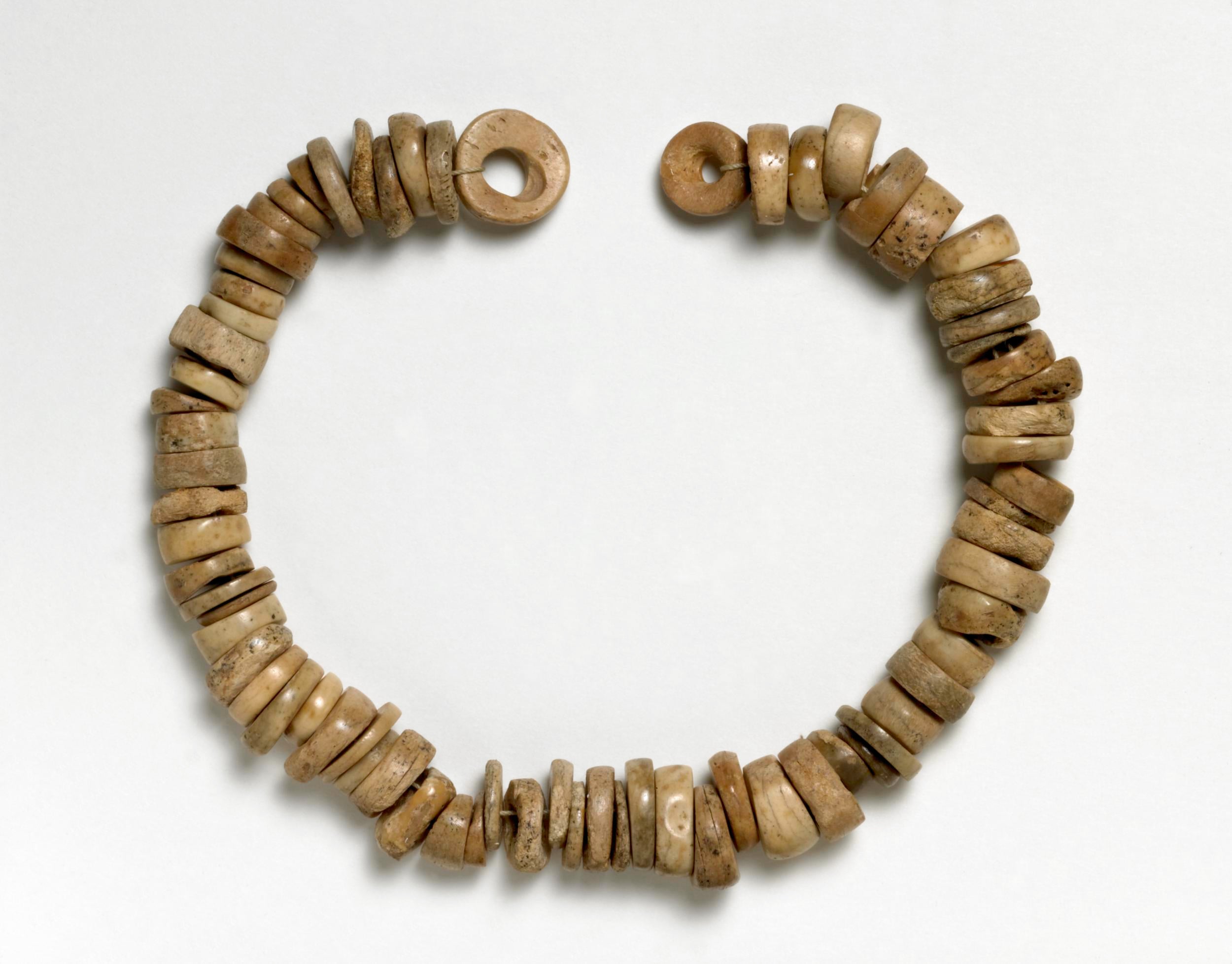From ancient civilisations to today’s fashion runways, adorning ourselves has become part of societal and cultural norms, so much so that an outfit is never really complete without jewellery.
History has seen everything from animal bones to precious gemstones used to decorate the bodies of aristocrats and proletarians alike. Although wearing jewellery as a concept has stood the test of time, the meaning with each individual attaches to the jewellery piece differs.
Today we’re going to take a look at the historical conventions that dictate how jewellery was worn, as well as the psychological and spiritual reasons behind why people wore it.
Jewellery In Ancient Civilisations
While today’s modern society uses jewellery for fashion and luxury, the story was different for several ancient civilisations.
Prehistoric humans, dating as far back as 130,000 years ago, were already wearing animal bones as ornaments. Archaeologists continue to unearth bits of adornments, including bracelets made from mammoth tusks, necklaces made from eggshells, and pendants made from shale.

Neolithic Bone Necklace found at Skara Brae in the Orkney Islands of Scotland, Source - The British Museum
Jewellery made from metals and gemstones, meanwhile, was first seen around 7,000 years ago. Most of these ancient civilisations used a variety of gemstones as symbols of wealth and to ward off evil:
1. Ancient Egypt
For ancient Egyptians, jewellery was a sign of power and wealth. They also used certain pieces as amulets and talismans, often adding a variety of gemstones to each piece.
Gold was highly prized, as its colour was believed to symbolise the sun. It was used for pharaohs’ and priests’ jewellery and they were famously buried with it!
 Pectoral and Necklace of Sithayorunet with the Name of Sensworet II, c.1887-1878 BC, Source - The Metropolitan Museum of Art
Pectoral and Necklace of Sithayorunet with the Name of Sensworet II, c.1887-1878 BC, Source - The Metropolitan Museum of Art
2. Ancient Greece and Rome
 6th- 5th Century BCE Ancient Greek & Cypriot Jewellery, Source - The Metropolitan Museum of Art
6th- 5th Century BCE Ancient Greek & Cypriot Jewellery, Source - The Metropolitan Museum of Art

Ancient Greeks and Romans wore jewellery to symbolise their social status. Greeks created jewellery to reflect their gods, with special focus on fine metalwork often described in their texts. Romans, on the other hand, focused on coloured gemstones and glass. Both civilisations, however, preferred to wear elaborate pieces, particularly in the applications of filigree and granulation techniques.
3. Mesopotamia

Mesopotamians preferred their pieces to be made from different metals and inlaid with various brightly-coloured gemstones. Both men and women wore jewellery, often created in intricate shapes inspired by nature like leaves, grapes, and spirals.
4. Mesoamerica

Aztec Serpent Labret with Articulated Tongue, AD 1300-1521, Source - The Metropolitan Museum of Art
Mesoamerican jewellery was exclusive to the nobility. The more pieces one wore, the higher their ranks were. The Aztecs prized gold as ornaments and sacrifice to the gods, while the Mayans preferred jade, silver, gold, copper, and bronze.
5. Ancient China

Although it was a status symbol, jewellery was worn by all social classes in ancient China. The Chinese also used them as talismans. Jade and silver were the most valuable, formed into various symbols that reflect their beliefs (e.g. dragon, phoenix).
6. Ancient India

One of the first civilisations to start creating jewellery, the people of the Indus Valley civilisation believed jewellery is for protection and wealth attraction. They combined stones with silver and gold. Gold represented immortality and is highly prized—a tradition passed down to today.
The Psychology Behind Wearing Jewellery

Maslow's Hierarchy of Needs, Source - Wikimedia Commons
In the 1940s, psychologist Abraham Maslow theorised that human beings have several layers of needs that are required to be met for an individual to feel fulfilled. The basic needs should be satisfied first, before those that are higher up on the pyramid.
Based on this framework, wearing jewellery then is a middling need, as it’s not as fundamental as food, shelter, and security. While it may not contribute to everyone’s self-actualisation needs, it does allow certain individuals to use jewellery as expressions of creativity.
Love and Belonging Needs
Plenty of animals use visual displays to seduce potential mates (e.g. peacocks, frigate birds). The same goes for human beings, as looking presentable often attracts the attention of potential partners. One of the ways to enhance beauty is to wear jewellery.
It’s interesting to note how certain pieces tend to direct the eye towards certain body parts—earrings highlight the erogenous parts of the ears and frame the face, belly rings give prominence to the reproductive area, and necklaces accentuate the breasts. Meanwhile, wedding bands tend to dissuade strangers as the wearer is already married.
Jewellery is also given as a gift to woo potential partners, or as a sign of betrothal (most often as an engagement ring). Some people also use jewellery as a symbol of affiliation in a certain group, like masonic jewellery.
Esteem Needs
Perhaps passed down from our ancestors, the possession of valuable stones continues to be a sign of wealth.
Precious gemstones like Diamonds increase in value the rarer they become. In terms of esteem, it gives individuals the feeling of prestige and accomplishment to own several pieces. The rarer the stone, the higher the social status.
Self-Actualisation

Wearing jewellery has also become an expression of a person’s identity. For instance, one woman may opt to wear a silver collar necklace, while another might prefer a gold necklace with a turquoise stone pendant. Whichever the choice, it is a reflection of their personality and creativity that they want to show to the world.
Although jewellery has been made throughout history most often for women, more and more men today have embraced jewellery beyond cufflinks as part of their self-identity, fuelled by the post-modern world’s continuous blurring of traditional gender roles.
Spiritual and Symbolic Meaning Behind Jewellery

Since ancient times, certain symbols and stones were believed to ward off evil spirits, attract wealth, or demonstrate love. Jewellery that signifies symbolic and spiritual beliefs are still very much in vogue today.
For instance, those who follow the Christian faith believe that wearing a cross necklace can ward off evil or that wearing St. Jude medals can help those going through difficult times.
Buddha pendants are considered bringers of good luck, good fortune, and good health. Celtic knots, meanwhile, symbolise unending interconnectedness, often given to a lover.
Birthstones have also received mainstream recognition, as some feel a strong connection to certain stones associated to their birth months. Certain crystals and metals are also believed to bring a number of benefits to their users (e.g. silver can fight off infections, amethysts can bring relaxation, citrine can help with clarity).
Although its use changed throughout history, jewellery continues to be a part of human civilisation. The need to adorn oneself—be it for psychological, spiritual, or symbolic purposes—plays a constant role across class, gender, religions, and cultures.






Many of us wear jewelry every day without a second thought, but it’s an interesting question considering how this habit of jewelry wearing began.
The higher human need for social and self-esteem fulfillment sometimes comes with a desire for positive social recognition and status.
In the early prehistoric times, jewelry might have been seen as a novel, creative innovation, marking the wearer as a type of pioneer. Read more: https://www.themuseumoutlet.com/